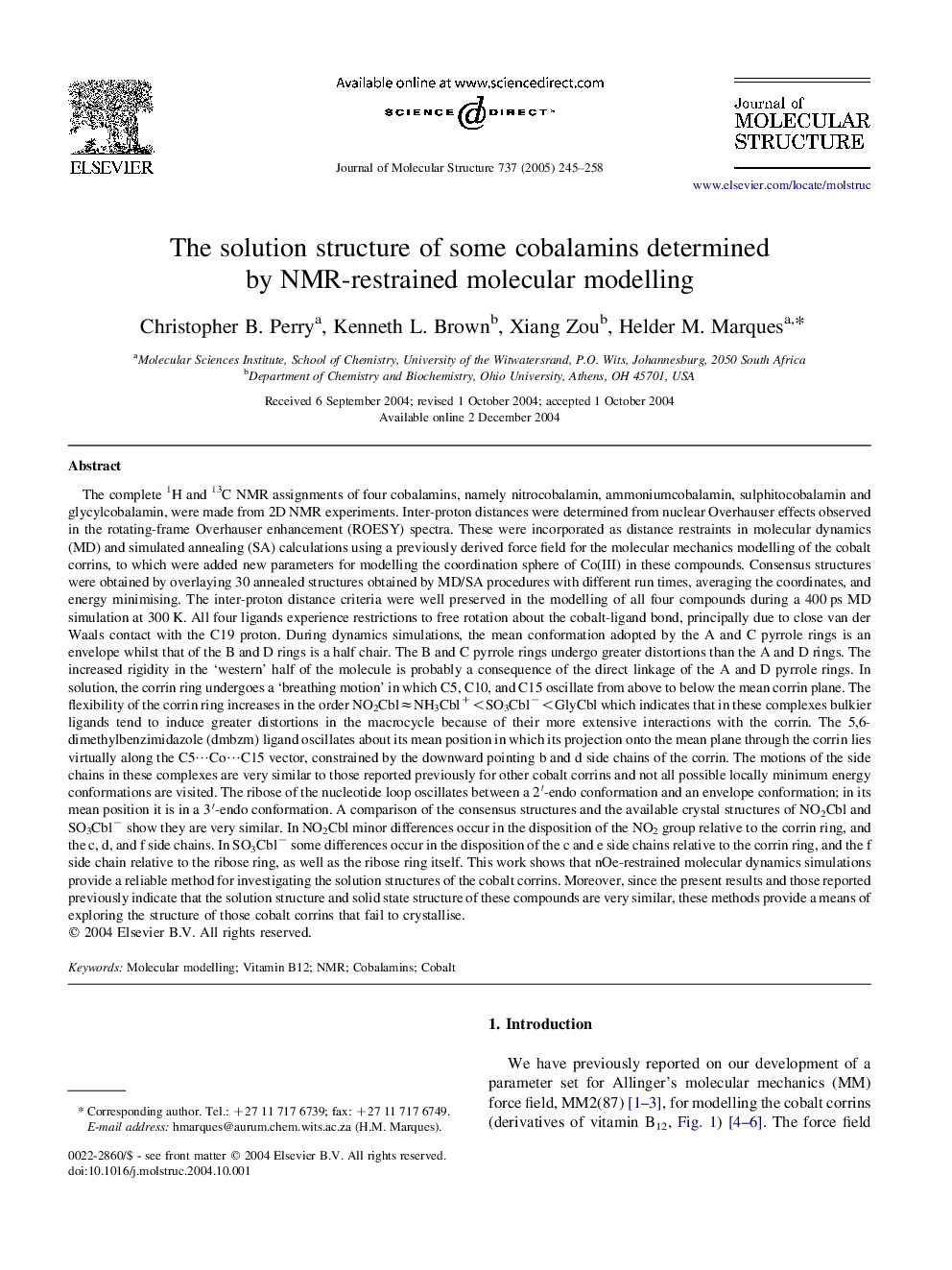| Article ID | Journal | Published Year | Pages | File Type |
|---|---|---|---|---|
| 9770368 | Journal of Molecular Structure | 2005 | 14 Pages |
Abstract
The complete 1H and 13C NMR assignments of four cobalamins, namely nitrocobalamin, ammoniumcobalamin, sulphitocobalamin and glycylcobalamin, were made from 2D NMR experiments. Inter-proton distances were determined from nuclear Overhauser effects observed in the rotating-frame Overhauser enhancement (ROESY) spectra. These were incorporated as distance restraints in molecular dynamics (MD) and simulated annealing (SA) calculations using a previously derived force field for the molecular mechanics modelling of the cobalt corrins, to which were added new parameters for modelling the coordination sphere of Co(III) in these compounds. Consensus structures were obtained by overlaying 30 annealed structures obtained by MD/SA procedures with different run times, averaging the coordinates, and energy minimising. The inter-proton distance criteria were well preserved in the modelling of all four compounds during a 400Â ps MD simulation at 300Â K. All four ligands experience restrictions to free rotation about the cobalt-ligand bond, principally due to close van der Waals contact with the C19 proton. During dynamics simulations, the mean conformation adopted by the A and C pyrrole rings is an envelope whilst that of the B and D rings is a half chair. The B and C pyrrole rings undergo greater distortions than the A and D rings. The increased rigidity in the 'western' half of the molecule is probably a consequence of the direct linkage of the A and D pyrrole rings. In solution, the corrin ring undergoes a 'breathing motion' in which C5, C10, and C15 oscillate from above to below the mean corrin plane. The flexibility of the corrin ring increases in the order NO2CblâNH3Cbl+
Related Topics
Physical Sciences and Engineering
Chemistry
Organic Chemistry
Authors
Christopher B. Perry, Kenneth L. Brown, Xiang Zou, Helder M. Marques,
